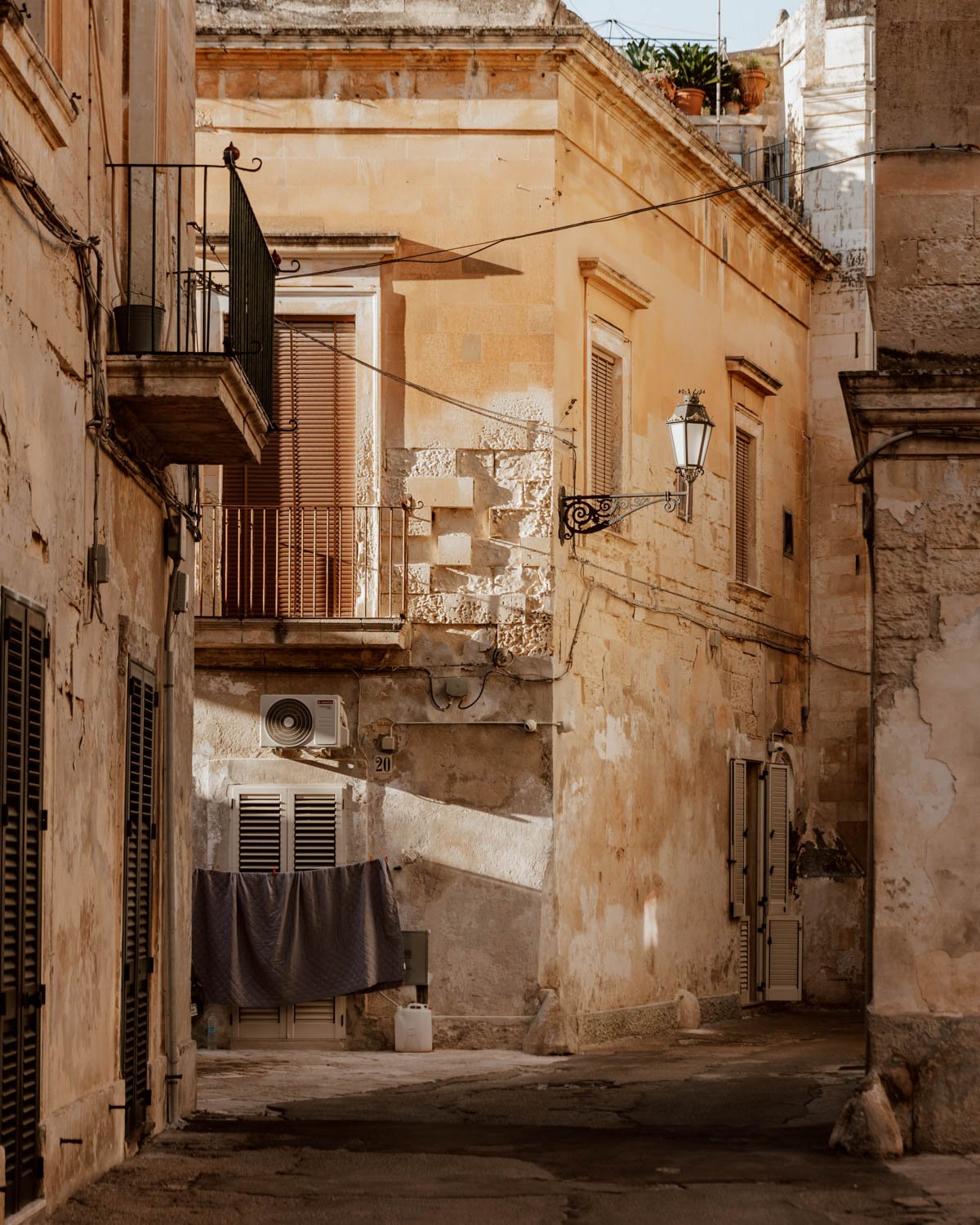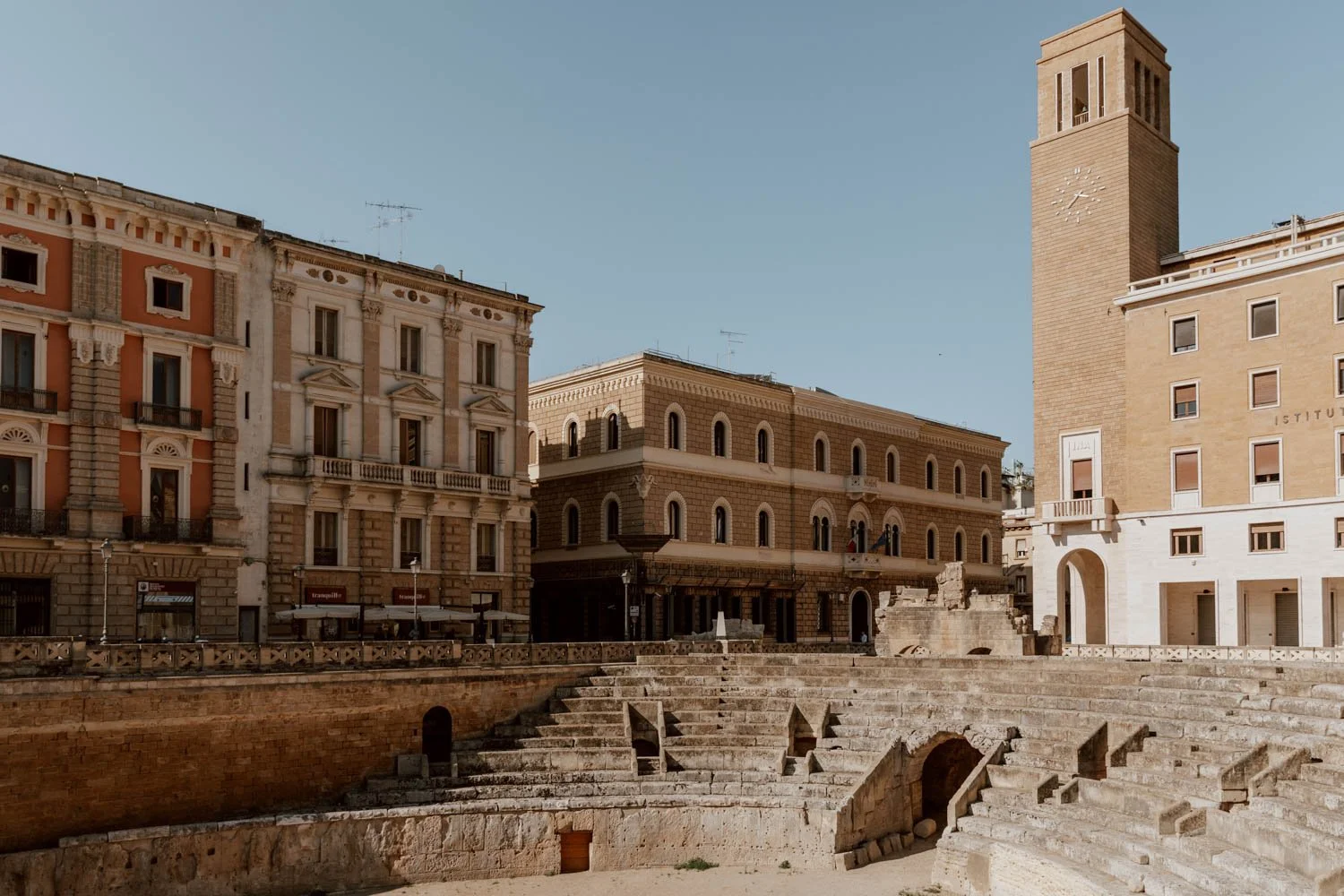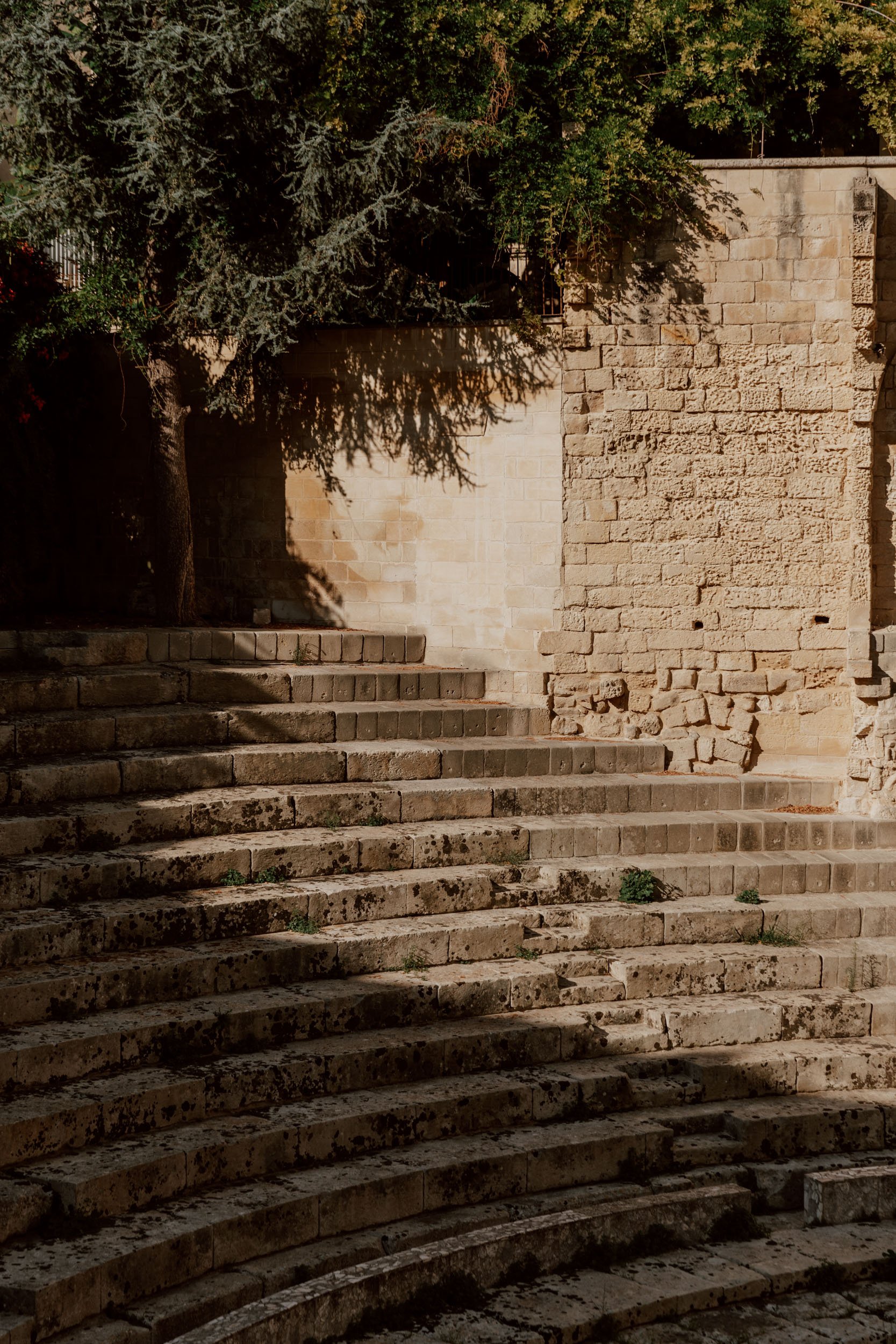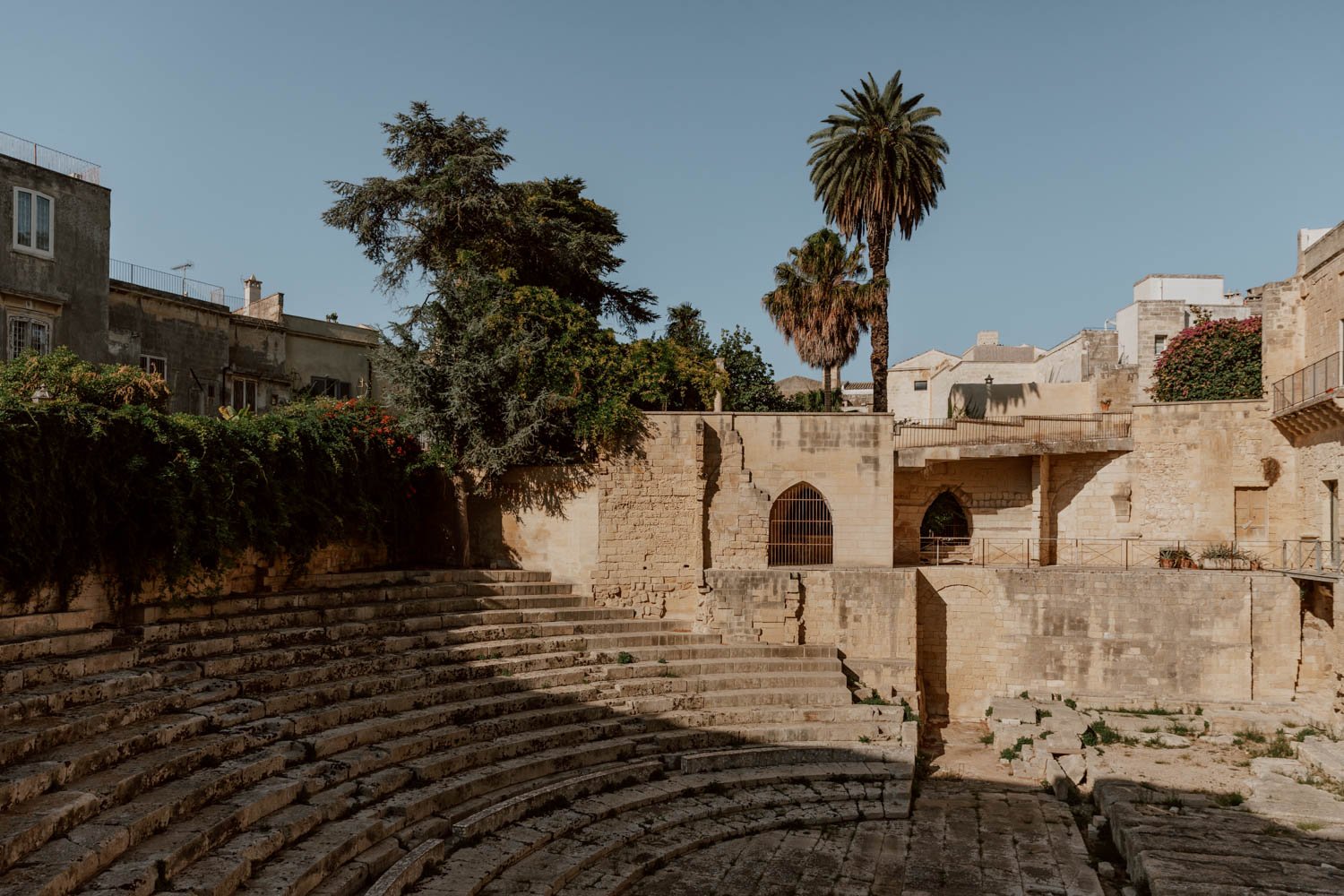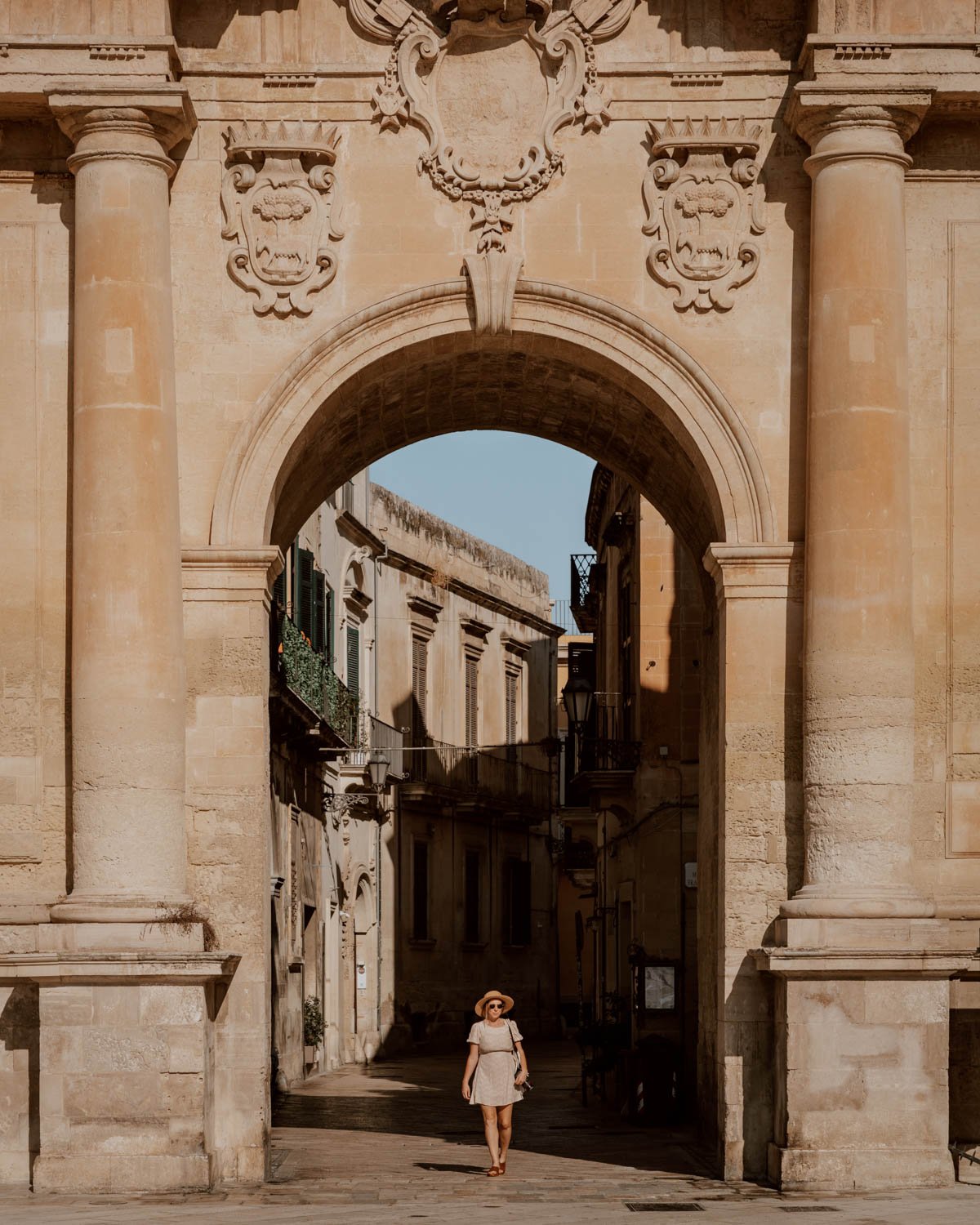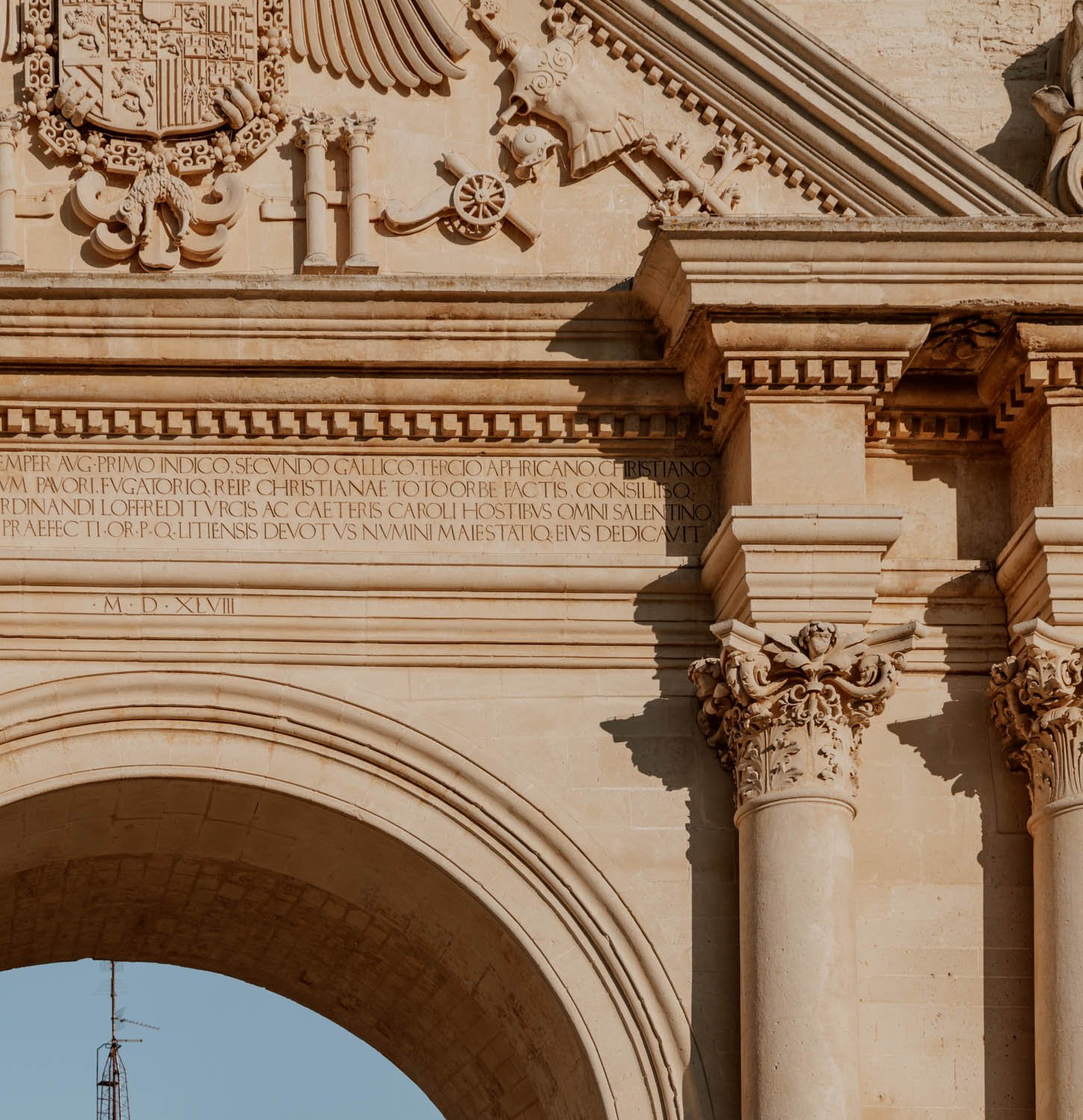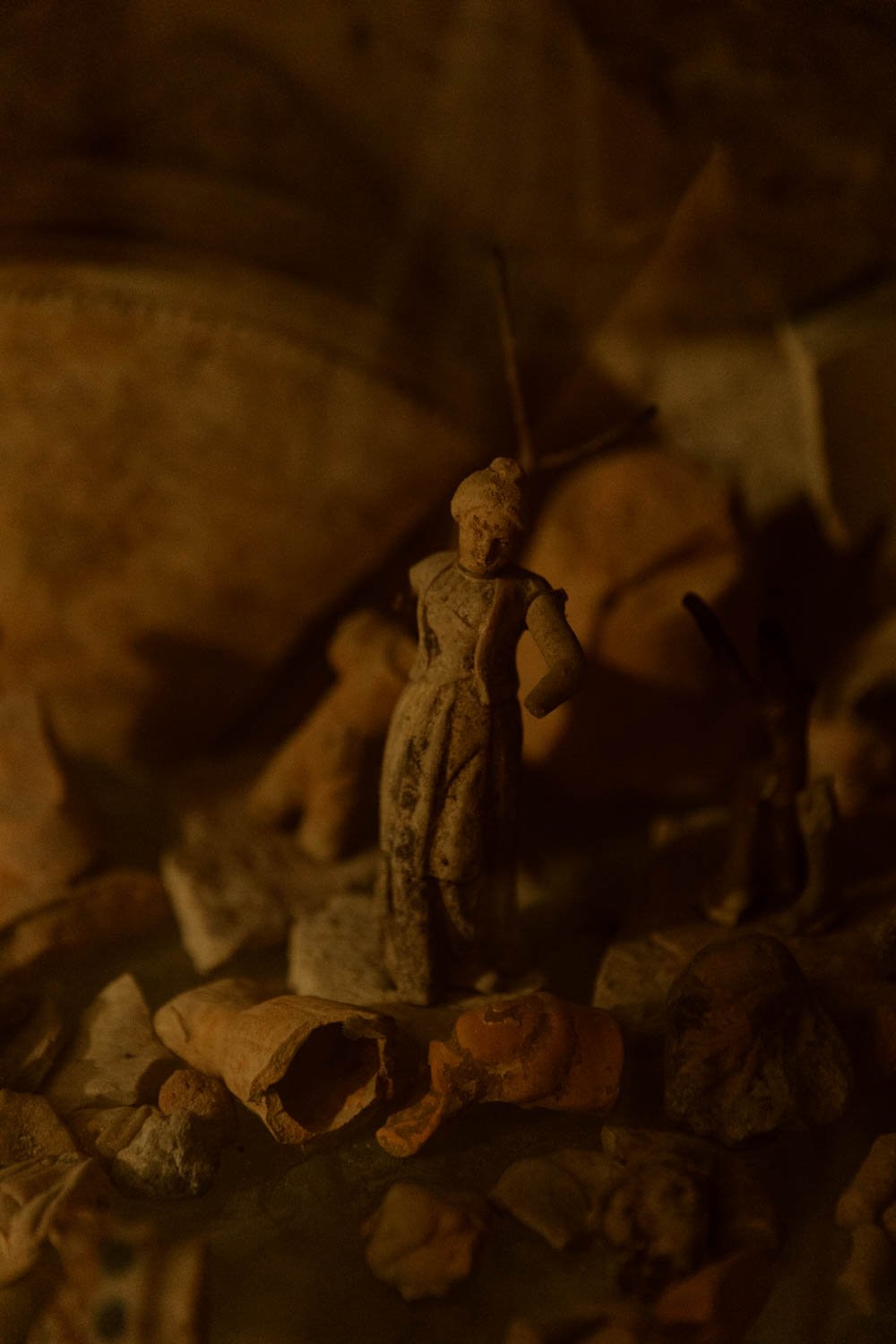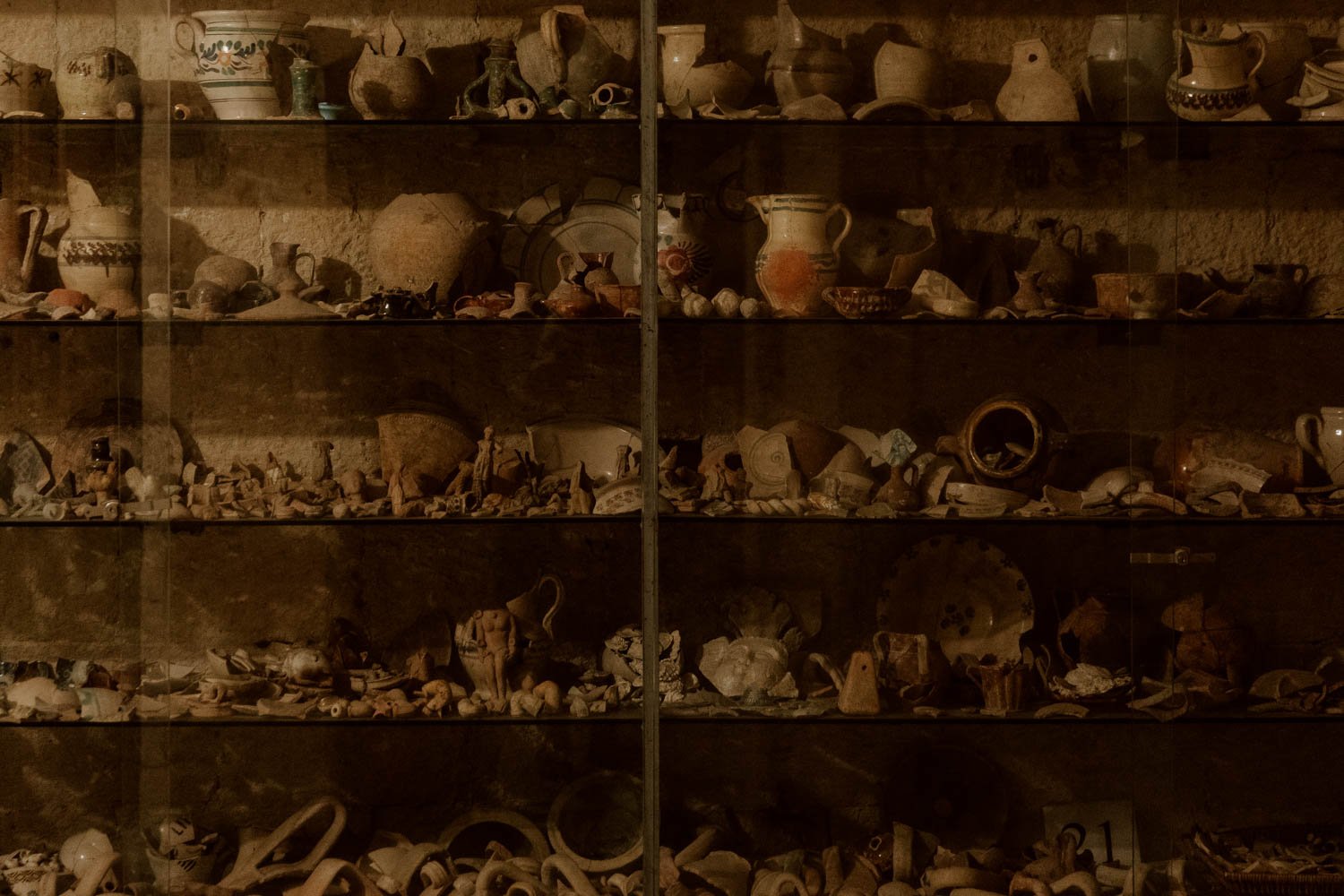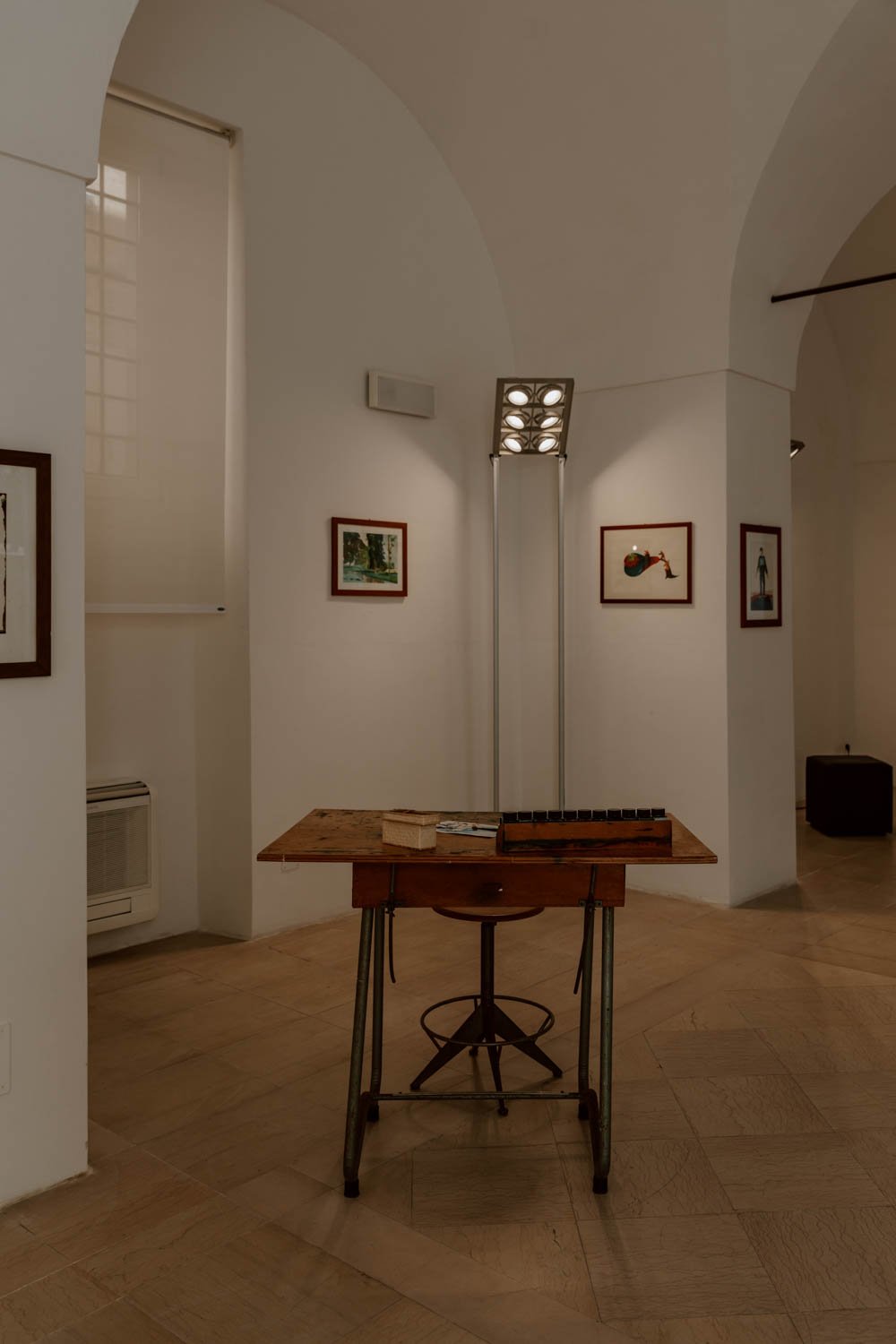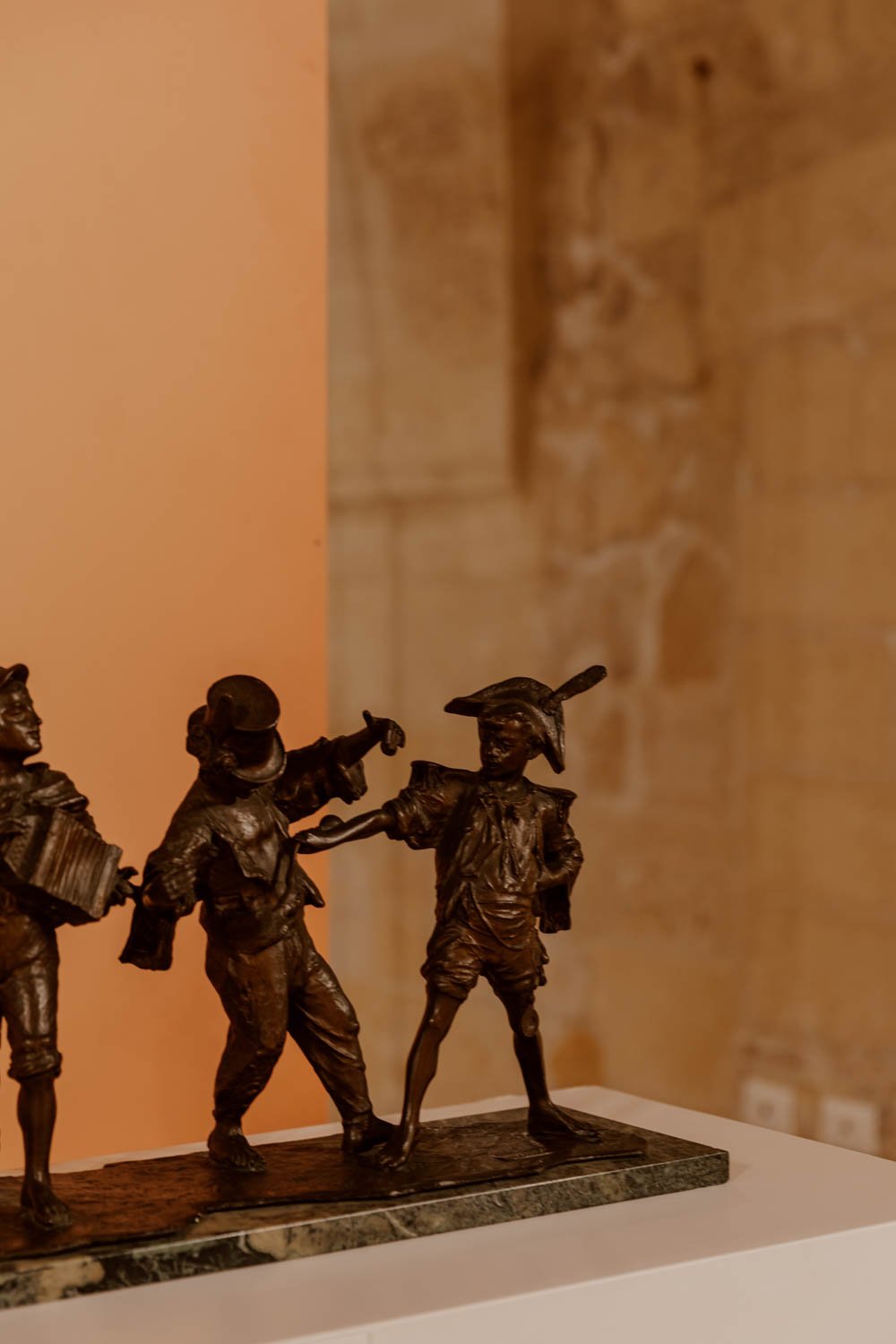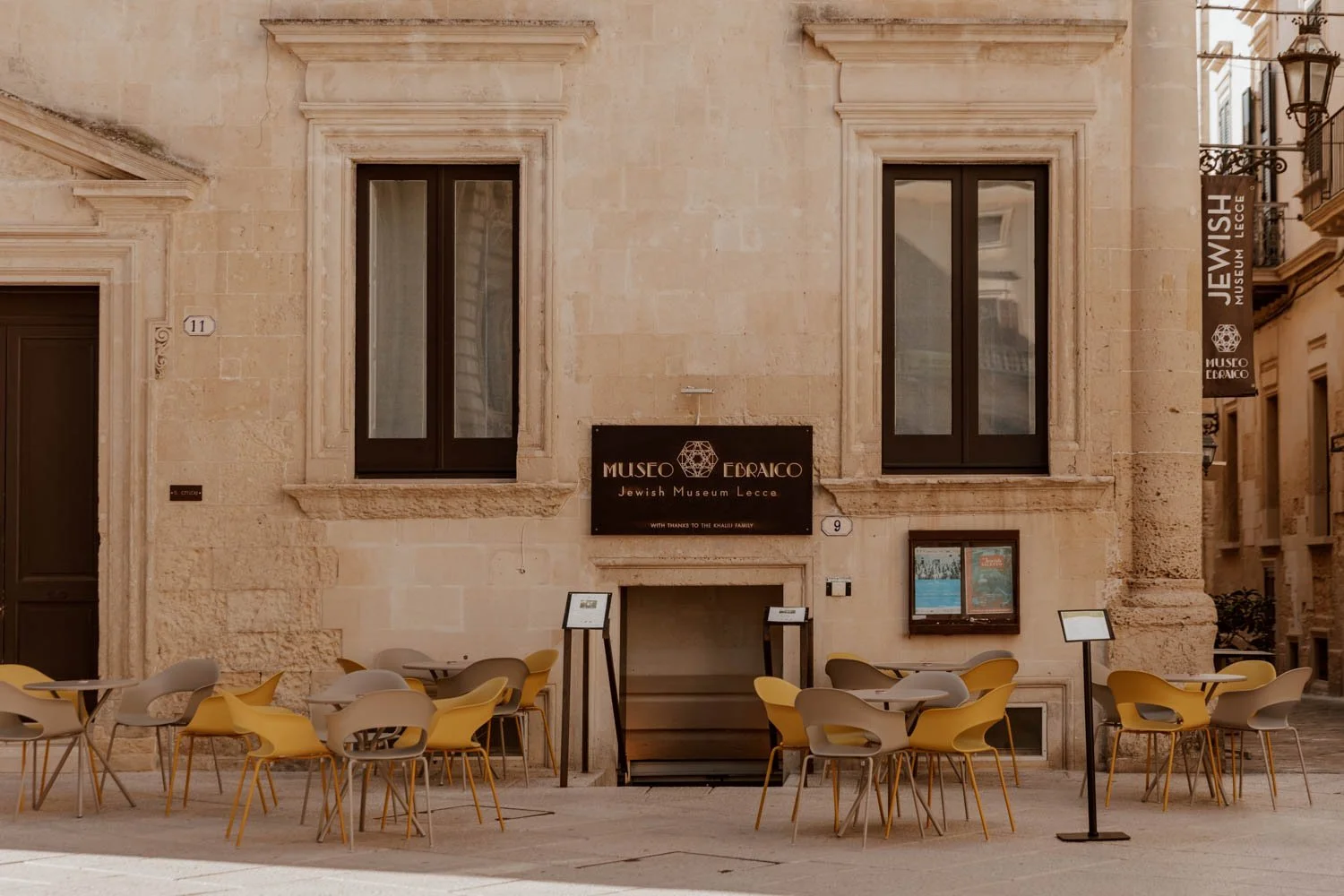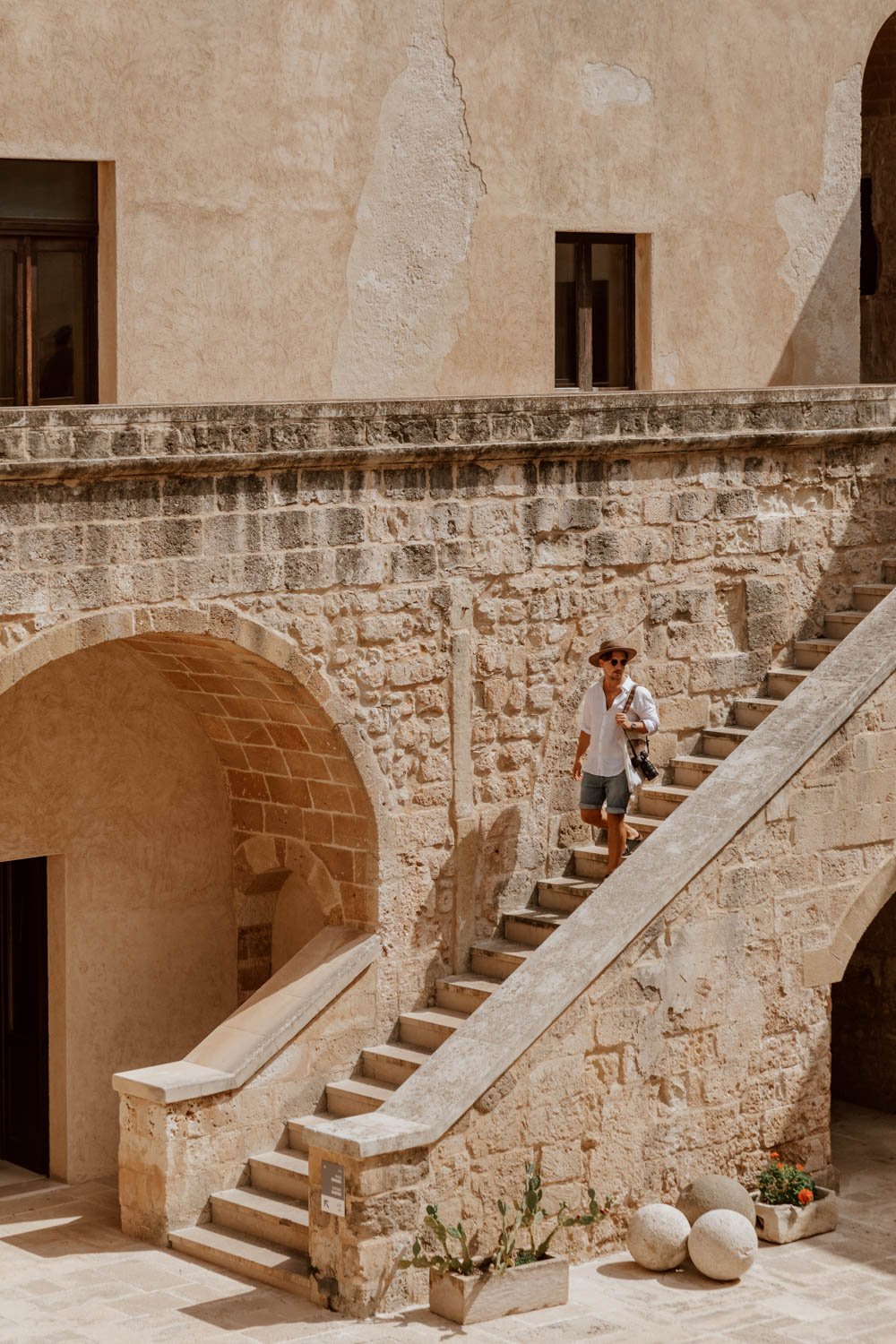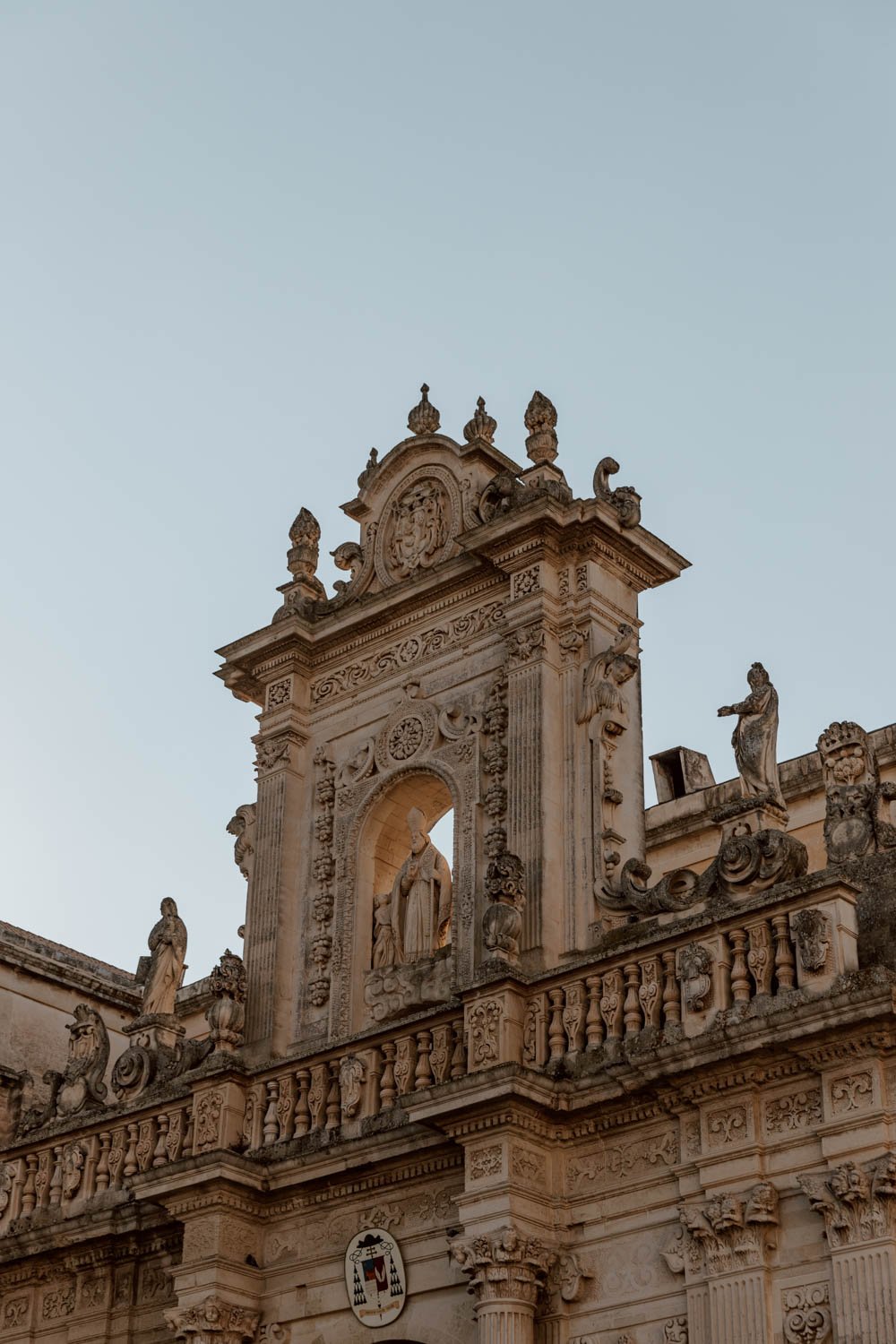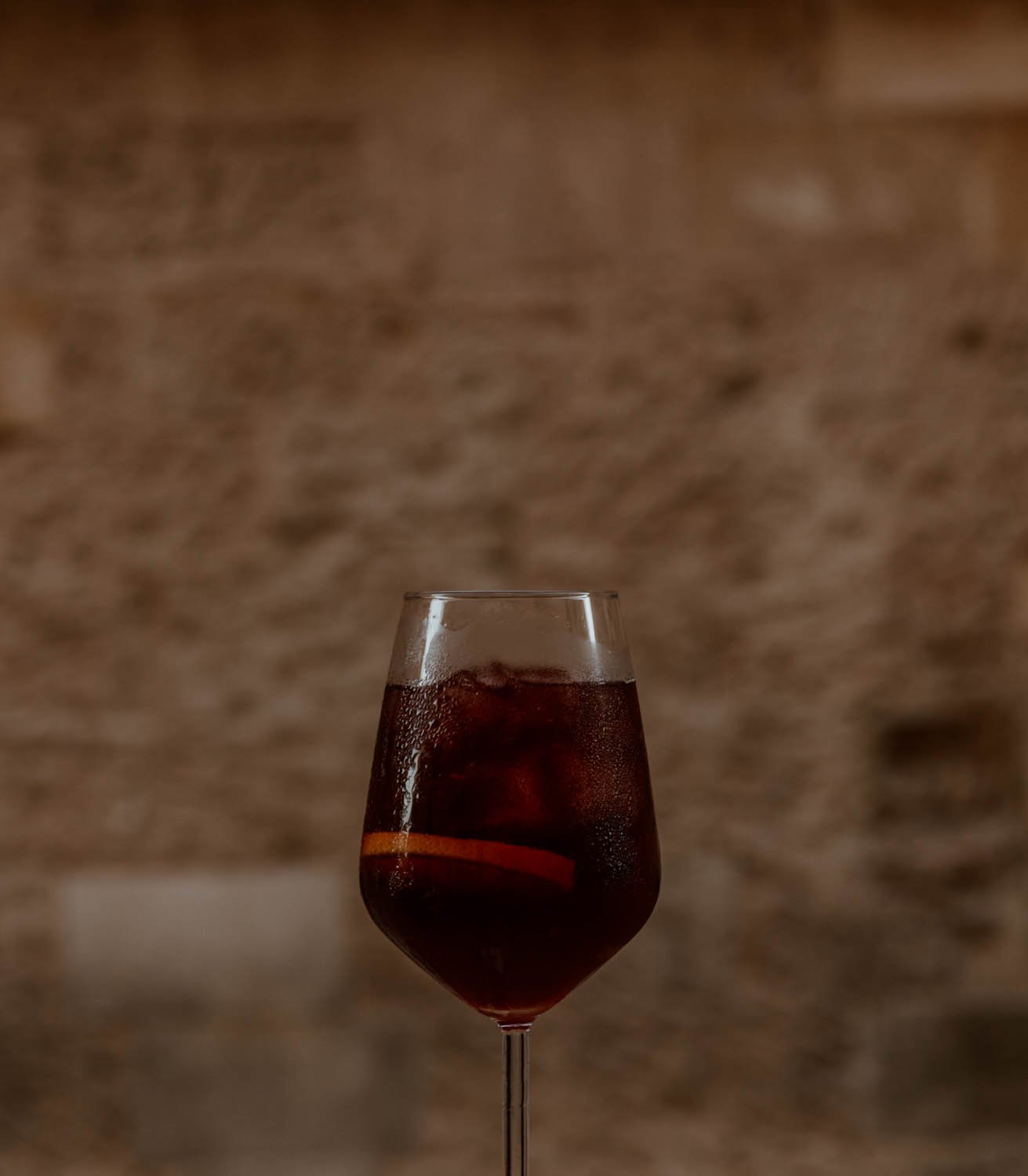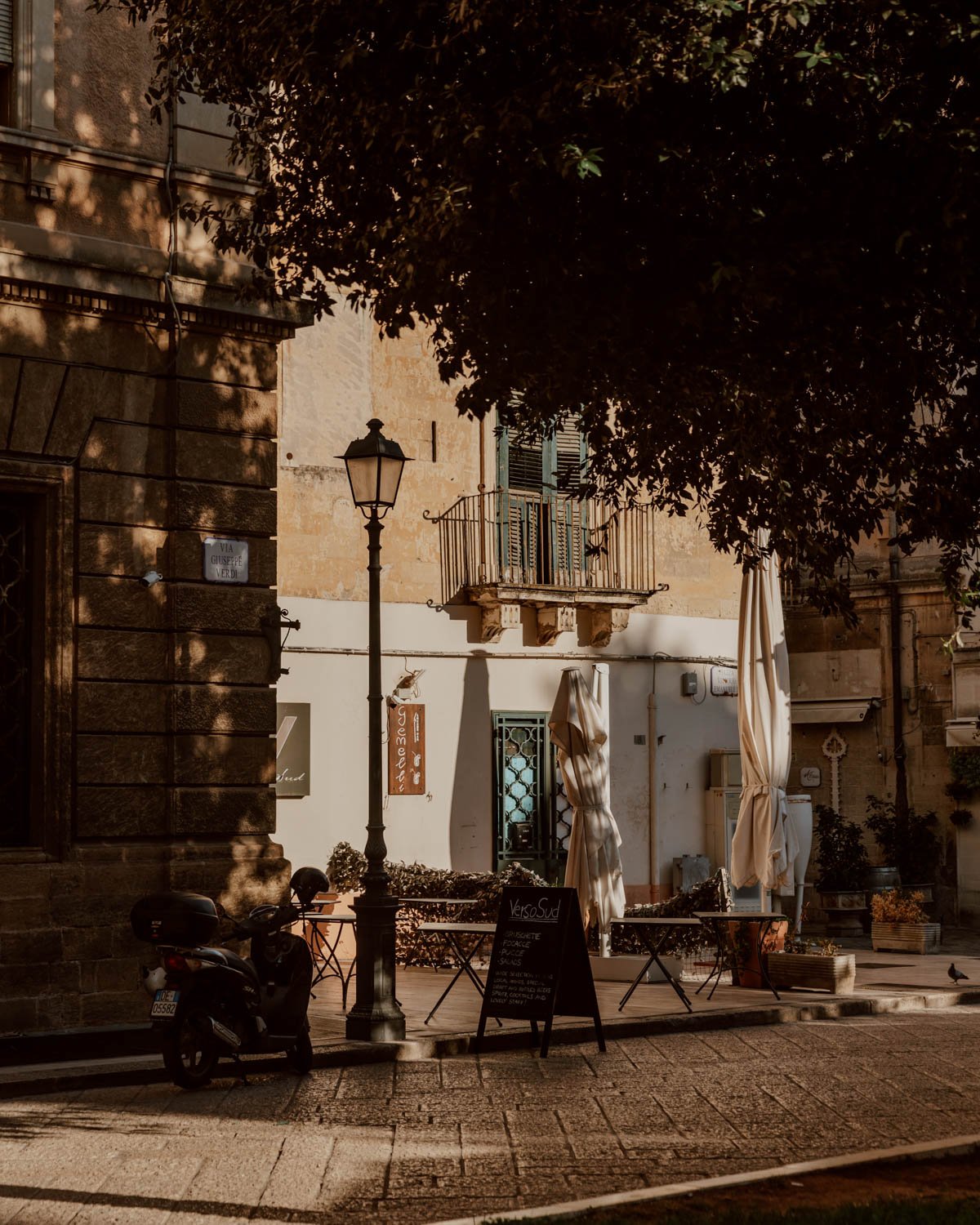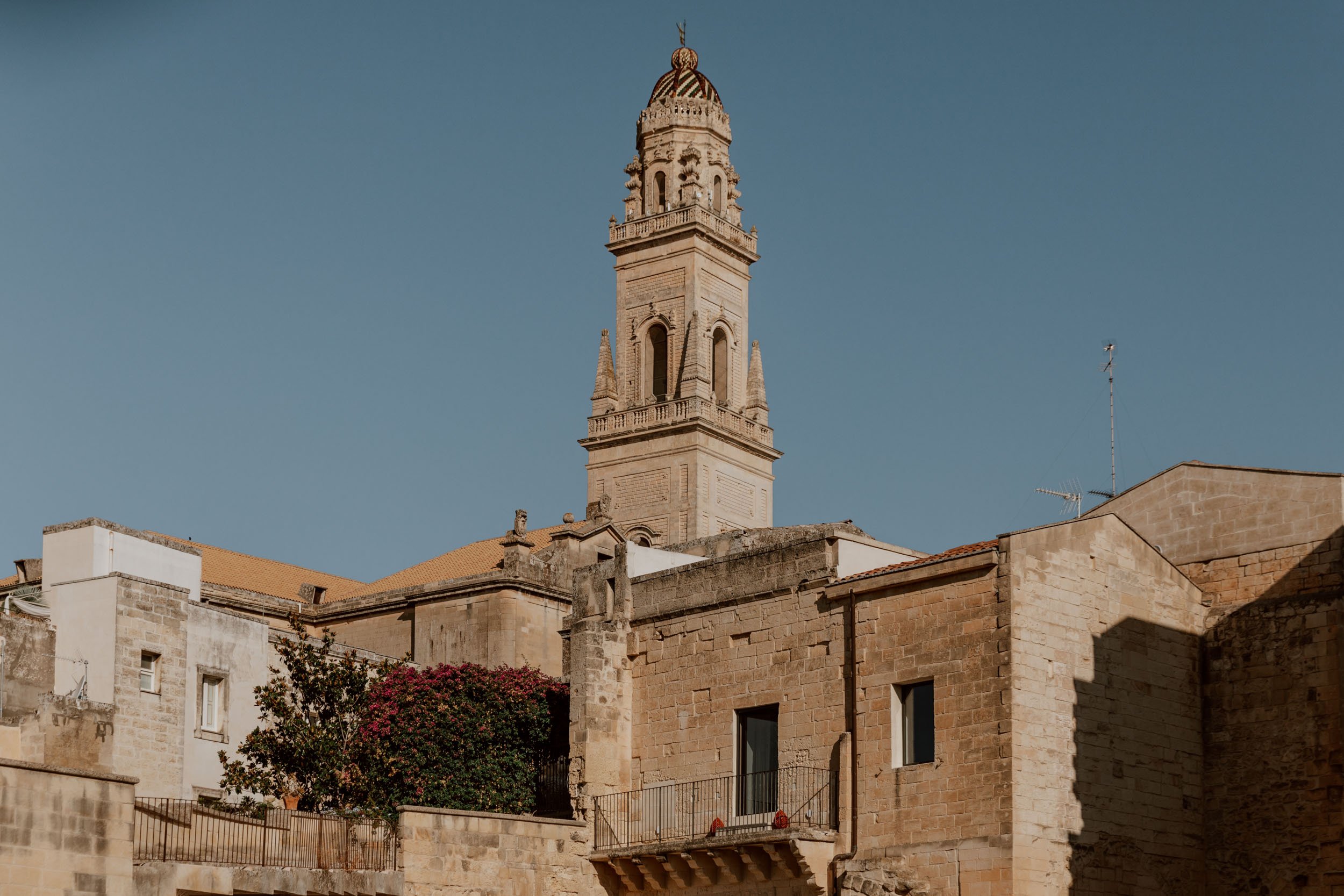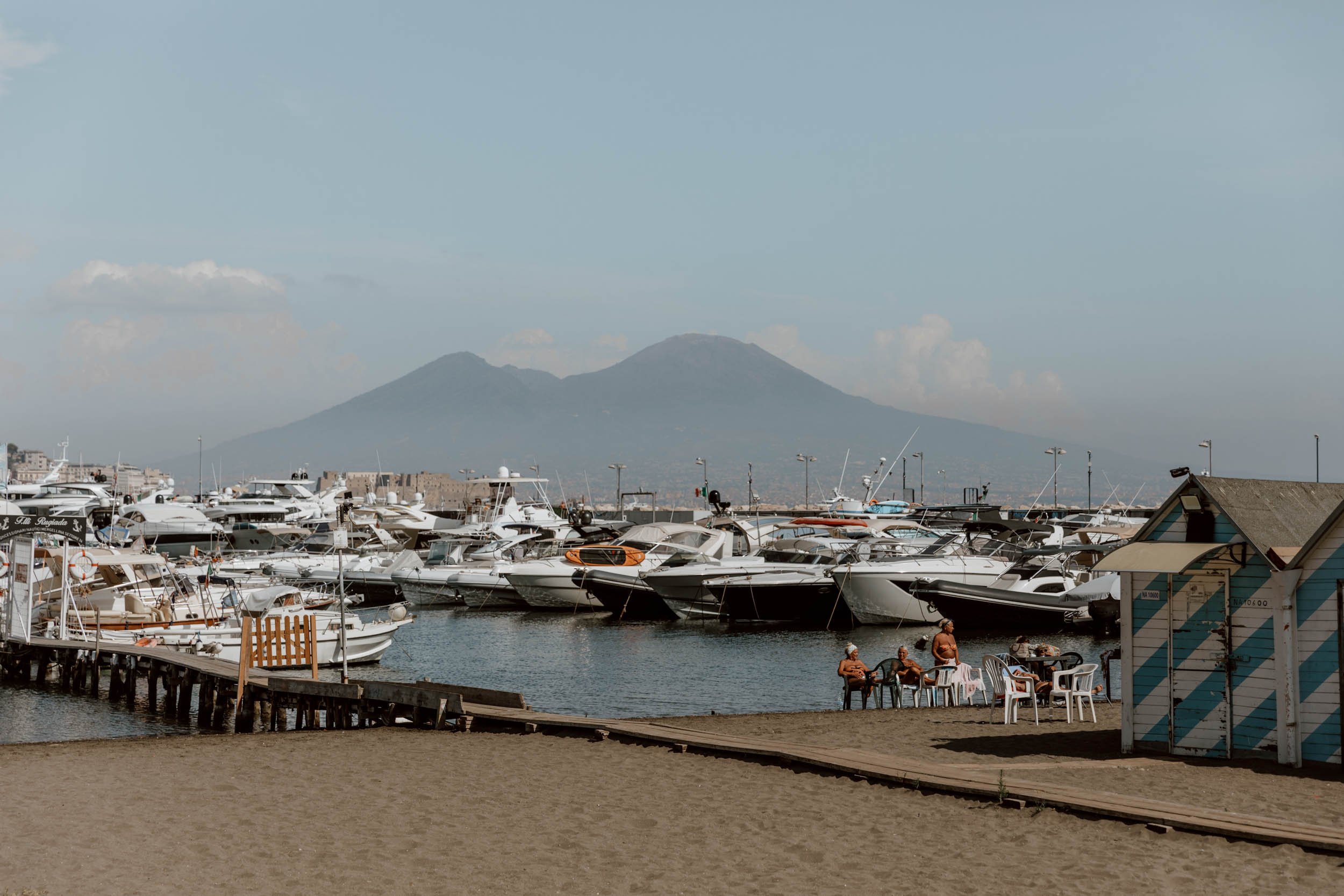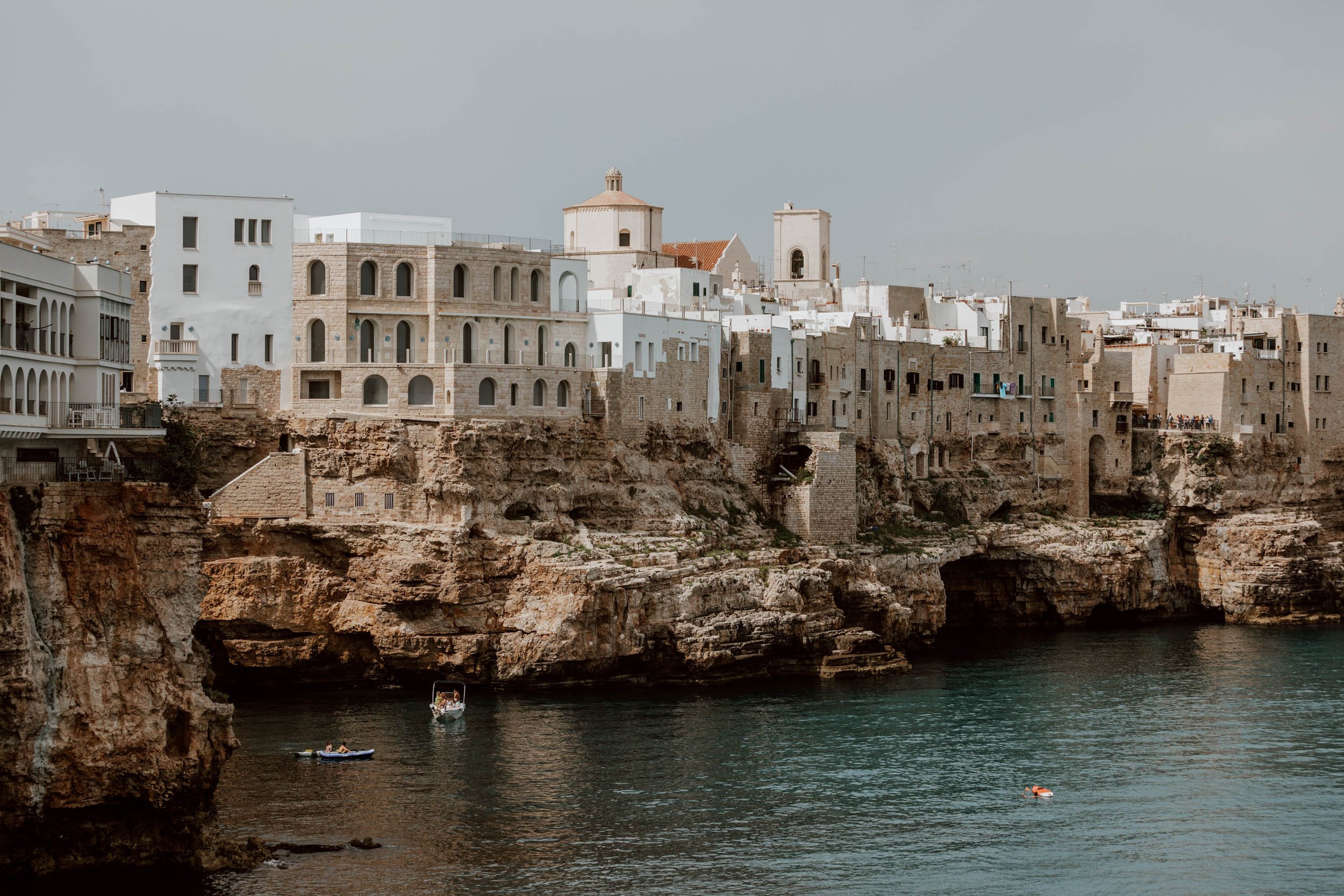Planning a stay in the southern city of Lecce? Our guide will help you make better travel memories.
Eschewing inland cities for coastal towns and countryside villages, we chose not to visit Lecce during our first visit to Puglia.
And whilst we did squeeze in a day trip during our second sojourn in the southern Italian region we’ve come to know so well, we left feeling a little underwhelmed. Perhaps it was the early spring weather, the grey sky failing to bring alive the golden palette for which the city is known.
Lecce, for us, simply didn’t fit with the region famed for white-washed houses, beautiful beaches, and the clear waters of the Mediterranean.
So, fast-forward to our third Puglian road trip last summer in search of a different side, and we knew that Lecce deserved a second chance.
Known as the Florence of the south, the historic city within the now mostly fallen old walls is a Baroque masterpiece, a living museum built with a material so unique to the area it has gained the name ‘Lecce Stone’. Loved by masons for its ability to be easily modelled (important when one considers the intricate and elaborate designs that decorate the facades of the period’s palaces and churches), its natural tones mean that when the sun rises and falls on a clear day, the city of Lecce glows like warm honey in the light.
For us, that golden ochre hue, so lacking in our early spring visit, transformed Lecce into a city we should always have loved; a city that shouldn’t have needed a second chance.
In this guide we'll cover our favourite things to do in Lecce, alongside personal food and drink recommendations, our advice on where to stay, the parking situation, and important tips to make your stay the very best it can possibly be!
This is 13 Wonderful Things To Do in Lecce, Puglia.
Lecce Essentials
/ Fourth-largest city in Puglia
/ Ideal for a city break in May - October
/ Unique Baroque architecture
/ Well-located for coastal + countryside day trips
/ Great restaurant and bar scene
/ Large student population
/ No parking in historical centre
13 Wonderful Things to Do in Lecce, Italy
Wander the Historic Centre
The winding narrow streets, piazzas large and small, and wide boulevards that make up Lecce’s centro storico are a joy to to explore. Set over a relatively small area, its sometimes labyrinthine nature means that you can spend hours exploring rather aimlessly, but contentedly.
It’s within the historical centre, built upon layers of Roman foundations, that you will find many of the best things to do in the city - such as the Piazza di Duomo, the stunning Basilia di Santa Croce, and the Amphitheatre - but we implore you to not simply jump from map dot to map dot in an attempt to ‘do’ Lecce.
Instead wander serendipitously without a plan, taking in the outstanding beauty of streets and walls that could tell untold stories of love, life, and loss.
Marvel at the Roman Amphitheatre
Located in the grand Piazza Sant’Oronzo, Lecce’s impressive amphitheatre is a stark reminder that before the elaborate Baroque buildings that decorate the historic centre were constructed, it was the Romans that called this city home.
Built during Hadrian’s reign in the 2nd century, the amphitheatre’s existence was completely hidden from view until as recently as 1901, when its ruins were uncovered whilst work was being carried out to construct a new bank in the large public square.
To this day, much of the below-ground amphitheatre remains buried, but you can easily make out the horseshoe-shaped arena, which at its height could hold at least 15,000 spectators.
Only occasionally open to the public, most of the amphitheatre is visible from the pedestrianised road that passes through the piazza. It’s still used as a venue for events and performances, and thankfully was less of a rubbish receptacle than on our previous visit.
You can find Lecce’s Roman amphitheatre here on Google Maps.
Top Tip // If you’d like to gain a deeper understanding of the layers of history within and below Lecce, we recommend joining this highly-rated two hour walking tour with an expert local guide.
but don’t forget about the Roman Theatre
Nope, that isn’t a typo, Lecce does indeed have two vast Roman entertainment structures sitting silently amongst its more modern 17th century facades.
Much less grand that that found in Piazza Sant’Oronzo, the 4,000-seat, 2nd century Theatre is hidden away amid the Baroque alleys of the historic centre; if you didn’t know it was there, you could very easily miss it.
Indeed, its presence remained a mystery to those that lived and died alongside it for hundreds of years, only to be rediscovered in 1929.
First opened to the public in 1940, it underwent a further restoration at the end of the 90s with the further addition of the Museum of the Roman Theatre (where you’ll find various marble statues of the great Greek Gods that were discovered on-site).
Where + When | The Theatre can be found here, and is open 9am to 1pm Monday-Saturday. You can pay to enter both the theatre and the museum (€3 per adult) but the general consensus is that it’s probably not worth it as you have such a good view from the outside (when we visited it was not possible to enter due to works - that are still ongoing - so we can’t give an emphatic recommendation on whether to pay or not).
Did you know? // Some of you reading this may be wondering what’s the difference between a Roman amphitheatre and a theatre? Well, it’s something even we weren’t entirely clear on before we began spending so much time in Italy. Essentially, an amphitheatre is a full circle shape, while a theatre is only half a circle. In modern terms, an amphitheatre is more like a stadium while a theatre is more like a cinema or, well, a theatre.
Rome’s Colosseum is the most famous amphitheatre, but actually seeing the opera in Verona’s very own fantastically preserved one was a moment we’ll never forget.
Indulge in pasticciotto
Right, enough of the Romans for now (what have they ever done for us anyway?)
Whether you swoon at the idea of pastries or prefer savoury delights, there’s one sweet treat that you absolutely have to try when you’re in Lecce - the pasticciotto.
Best served warm, these crumbly shortcrust pastries filled with a silky custard (whether it should be spiked with lemon is a debate that still rages amongst the traditionalists) are the ideal accompaniment to a morning shot of espresso.
The history of this local treat can be traced back to the small nearby town of Galatina, where quite by accident one day in 1745, a baker named Nicola Ascalone combined leftover shortcrust scraps and custard to make a smaller pastry. The result was a complete mess - a pasticcio - but went down a treat with the punters.
That little spontaneous mess of dessert has since transformed into one of Puglia’s most adored sweets.
Whilst the very best pasticciotto can still be found in Pasticceria Ascalone in Galatina - which has now been open for nearly 300 years and has produced 10 generations of bakers - if you’re only in the Lecce area for a couple of days and can’t make it over there on your trip, do the next best thing and make a beeline for Natale Pasticceria in the city.
Just off of Piazza Sant’Oronzo - and handily a few feet from our Airbnb - it’s a beautifully designed space and local institution offering all number of Italian treats but its the pasticciotto for which they are famous (we don’t recommend the gelato though).
Find it here on Google Maps.
Top Tip // For foodies and the curious, combine your pasticiotto indulgence with a three-hour guided tour of the city by joining this popular street food tour.
walk through the Ancient Portas
Whilst very little of Lecce’s original fortified town walls remain, three of the gates through which you could enter the historic centre do still stand:
Porta Napoli | Built in 1548 in honour of Charles V, and modelled upon a Roman triumphal arch (but with a Baroque flourish, naturally) Porta Napoli takes its name from the ancient road that would lead to Naples. The city’s main gate, it is also considered to be the most impressive, its vast grandeur emphasised by the tree-lined avenue that leads towards its entrance. You can find Porta Napoli here.
Porta Rudiae | Decorated with the a number of saints (including Saint Oronzo, the protector of Lecce), Porta Rudiae is the oldest of the city’s gates - although much of the one that stands today was built in 1703 after the original collapsed. You can find the gate here.
Porta San Biagio | At the southernmost point of the historic centre, this spectacularly beautiful gate was our favourite (although its location at the south of the historic centre makes it the least visited). We recommend heading there in the morning and grabbing a cappuccino and cornetto in the sun at the cafe just in front of it. Find Porta San Biagio here.
Have dinner at Alle due Corti
One of the most important and memorable meals we’ve had in Italy.
Off the back of featuring in Anthony Bourdain’s spontaneous visit in Parts Unknown and coverage in the New York Times, we knew a reservation was mandatory, but were surprised that there would still be an hour-long wait in the alleyway outside for our table.
However, the biggest surprise was that this no longer secret restaurant was struggling to survive.
Opened by Rosalba De Carlo in 1998, Alle Due Corti pioneered putting Lecce’s traditional cucina povera at the heart of her menu. In this historically very poor and rural part of southern Italy, the ‘food of the poor’ was based on what they grew and the meagre amount they could afford to buy. Meat was little-used due to expense, and eggs and dairy were the preserve of the wealthy’s diet. The poor made do and adapted, using methods of curing, salting, frying, substituting, and to make up for what they lacked. Indeed, so poor was Italy’s south, that some in the north mocked them as ‘turnip eaters’.
From these limitations, an entire set of ingredients and dishes that grew to be synonymous with Italy were created.
At Alle Du Corti though, the traditional receipes of the poor are stripped back to their original form, rather than adapted to the modern palate or ‘updated’ with the abundant levels of produce one can cheaply purchase today from any market. There’s the 100% vegetarian ciceri e tria, where the chickpeas are fried to imitate the crunchy pork fat they couldn’t afford. The polpette di melanzane (aubergine meatballs) where the texture is something that an aubergine has no right to achieve, and the Puglian favourite of orecchiette con cime di rapa, where those turnips take pride of place in the pasta. Severals of the menu’s dishes will be found elsewhere in Puglia, but some will only be found here or in the heads of nonne.
In short, she’s a gastronomic historian, and she’s been doing something for decades that is now the raison d'être of many a fancy restaurant and superstar chef.
Fast-forward to our visit, where Rosalba and her husband were enjoying a meal in the corner whilst their adult children ran the tables and kitchen (her son is the Giorgio is now the chef), and we were so sad to learn her that the restaurant was facing severe challenges and threats to their very existence. Despite being so clearly popular, the challenging years of Covid, rising costs, and finding good staff, were making the future uncertain.
Given how good our meal was, and how special those dishes felt in an unpretentious and affordable family-run restaurant such as this, we implore you to go and do your bit to make sure this remains in place for the fourth-generation.
The Details | As we mentioned, this little restaurant gets super, super busy. If you’re willing to wait, you probably will still get seated, but if visiting during summer that wait may take a very, very long time! So, to avoid disappointment or an unappealing level of waiting time, we highly recommend calling ahead to reserve - the lady we spoke with had excellent English, and she was also running the restaurant that evening.
Their website often doesn’t load for us, but reservations can be made by calling +39 0832-242223 or info@alleduecorti.com (best to call if last-minute though).
Alle Due Corti open throughout the week from 12.40pm-2pm and 7.40pm-10.30pm, but closed Sundays. And, as one always should in Italy, dress up a little bit for dinner
We didn’t take photos inside the restaurant, but if you’d like to see the absolute deliciousness that was served up, take a look at our Puglia Instagram Stories highlight.
Top Tip // If you’re in town for a couple of nights at least, we can also recommend Doppiozero (maps), a charming restaurant that specialises in traditional and local cuisine in a contemporary setting. Mezzo Quinto (maps) is a hole in the wall serving up affordable southern Italian street food, small plates, and sandwiches for a quick, casual lunch or dinner stop. Mosti e Misture, outside the walls and across the road from the park, is also decent spot for informal KM0 plates, sandwiches, and a decent aperitivo.
Lecce also offers one of the best opportunity to do a cooking class in a local’s home, and you can find several cooking experiences available to book online here. This pasta-making + wine-tasting workshop also has excellent reviews from other travellers.
Explore Museo Faggiano
Back in 2000, the building that now houses Museo Faggiano was just a rental property with a leaking pipe.
Keen to address his tenant’s damp problems, Luciano Faggiano embarked on what was assumed to be simple repair works. In addition to keeping them happy, he had plans to cash-in on Lecce’s increasing popularity as a tourism destination, and open a trattoria once the lease expired.
Spoiler alert: the restaurant never materialised.
In the process of seeking out sewage pipes, Luciano uncovered layer upon layer of history, dating back as far as the 5th century: medieval stones, a tomb from the Messapians, remnants of a Franciscan chapel, etchings from the Knights Templar,a Roman granary and even an emerald-encrusted gold Bishop’s ring.
Unwitthingly, beneath his rather unassuming building, lay evidence that perfectly reflected the varied history of Puglia.
One of the most surprising elements of this story, at least to us, was the fact that despite the clear historical significance of this unexpected find, there was no financial support to continue the dig. Instead - under the watchful gaze of Dr Tanzalla, a government-appointed archaeologist - the responsibility (and much of the cost) fell to the Faggiano family. Or, more specifically, Luciano’s two sons.
Years and years of painstaking, back-breaking work ensued, with all important artefacts carefully removed and placed into storage at two local museums: the Museo Sigismondo Castromediano and the Castillo de Lecce.
Once all works were completed, and the tenants had moved out, the Faggiano family decided against opening a restaurant in the hollowed out building, and instead converted the four-storey property into Lecce’s only independent museum - a truly fascinating place, family-run, and an absolute must-visit whilst in the city.
The Details | The museum is open between 9.30am - 8pm, and costs €5 to enter. Not all the owners speak English, but they do have a super helpful pamphlet to explain the history and the exhibits, available in several languages, and set route to follow. This makes a lot of sense of the building and finds, and we recommend you follow it. Note that it’s quite claustrophobic and creepy in parts, especially in the depths.
You can find the museum here on Google Maps.
By the way, chatting to one of the sons, the years of work and cost that resulted from his Dad’s experience has supposedly made everyone else in the centre of Lecce incredibly reluctant to even dig a hole to do repairs for fear of what they’ll find! For more background on the discovery, read this New York Times article.
discover more of Lecce’s museums
Fondazione Biscozzi Rimbaud
Opened in 2018 by Luigi Biscozzi and his wife Dominique Rimbaud, this gallery showcases a lovingly amassed collection of contemporary and modern art from some of the region’s leading artists. There are more than 200 permanent pieces, but the space also hosts frequent temporary exhibits and events, quickly establishing it is as one of Lecce’s key cultural and educational hubs.
The Details | The museum is open every day 4pm to 7pm, except Monday. Entry is €5 with concession pricing available - find it here on Google Maps.
MUST
Situated within the stunningly restored 15th century Monastery of Santa Chiara, visitors can now find MUST, the city’s civic museum. Charting the history of Lecce from the Messapian age to the 20th century, it also houses a small collection of modern and contemporary art.
If we’re completely honest, the historical section fell a little flat, but we genuinely enjoyed the art exhibits, the architecture and the wonderful views of the Roman Theatre from the back window.
The Details | MUST is open 9am to 7pm Tuesday to Thursday, and closes at 8pm on Fridays, Saturdays, and Sundays. Standard tickets cost €5.50, with concessions priced at €3.50 per person. You can find the museum here.
Museo Ebraico di Lecce
Located within the lower level of Palazzo Taurino, Museo Ebraico is a place which seeks to tell the forgotten stories of the city’s once sizeable Jewish population.
Expelled from the city in the 16th century, the vast majority of the synagogues have long since been destroyed, with Baroque buildings erected in their place (including Basilica di Santa Croce next door). The site of the museum however, in the lower levels of Palazzo Taurino, allows visitors to view a number of underground ruins, including those of a mikvaot, mezuzah’s doorway, columns of the old synagogue, in addition to learning about Lecce’s proud Jewish past.
The Details | The museum is open Monday to Saturday from 10am to 7pm and 10.30am-1.30pm on Sundays and holidays. Entrance costs €9 and includes a 20-minute guided tour. One-hour tours are also available if you book in advance.
Top Tip // This super-popular guided walking tour takes in the city’s iconic Baroque landmarks and includes entry to the Jewish Museum. It also includes your entry to the Duomo, Basilica di Santa Croce, and subterranean Lecce, making it really excellent value. Find out more here.
Head on a Day Trip
Whilst Lecce is a beautiful city to enjoy for a few days, it also makes a great base from which to explore more of the region, with several of Puglia’s most popular towns, villages and beaches within an hour’s drive.
We’ve covered more in our guide to the best day trips from Lecce (published soon), but our picks include:
Ostuni |A beautiful whitewashed town with fabulous swimming and sunbathing - discover more in our guide to the best things to do in Ostuni.
The Beaches | Several of our very favourite Puglian beaches and swimming spots are relatively close to Lecce including I Faraglioni, Torre dell’Orso and Baia die Turchi. For more information for each in our guide to the best beaches in Puglia.
Galatina | We’ve already mentioned the original pasticciotto that can be found in Galatina’s most famous bakery, but this is a pretty little town in its own right.
Gallipolli | A beautiful old town by the sea, Gallipoli is a must-visit on the west coast of Puglia - read our guide to the city here.
Riserva Naturale Le Cesine | A WWF-protected area of wetland, open for walks and bird-watching.
The destination-specific guides we’ve linked to will provide you all the information you need to plan your independent adventures from Lecce, but if you’d prefer to join a tour for your day trip, the below are a couple of excellent options:
This transport-only tour gives you the entire day to explore Ostuni, Alberobello and Polignano A Mare independently without having to worry about how you’ll get there!
Alternatively, this full-day guided tour to the Val d’Itria visits Ostuni, Alberobello and Martina Franca.
Admire the Extravagant Basilica di Santa Croce
In a city filled with Baroque masterpieces, there is one building that truly stands out - the exuberantly decorated Basilica di Santa Croce.
Designed by Francesco Antonio Zimbalo - one of the region’s most prominent Baroque architects - the basilica took an incredible 100 years to be built, with much of that time being due to the intricate design of the facade. Sheep, dodos, grotesque figures, cherubs and even vegetables were committed into stone, resulting in a design that has created a Marmite-like response over the years.
Whilst many visitors to Lecce choose to simply enjoy the Basilica for its aesthetic external beauty, for a fee, it’s also possible to enter to appreciate the more traditionally, richly decorated interior.
Where + When | Tickets cost €6 per adult, but if you plan on visiting at least one more of the city’s main churches (including the Duomo), we’d recommend buying the ‘LeccEcclesiae’ combo ticket. You can find full details of this below.
Travel Tip // To the the left of Basilica di Santa Croce, you will find the Palazzo dei Celestini (another exquisite building designed by Zimbalo, and now the seat of the local government). There is an arched walkway that leads through the palazzo’s courtyard and on to Giardini Pubblici Giuseppe Garibaldi, Lecce’s main park. The green space itself isn’t terribly impressive, but it is a pleasant place to escape the sun if visiting Lecce during the summer months.
The LeccEcclesiae Ticket
If you are in Lecce for a few days and keen to visit several of the city’s most important churches and monuments, including Basilica di Santa Croce and the Duomo, instead of buying single entry tickets for each, we’d highly recommend getting a ‘LeccEcclesiae’ combo ticket.
This ticket allows entry to the following sites:
The Duomo
Basilica di Santa Croce
Chiesa di Santa Chiara
Chiesa di San Matteo
Antico Seminario
Museo di Arte Sacra (MuDAS)
Tickets can be bought from the LeccEcclesiae Infopooint, located inside the Antico Seminario (here on Google Maps) as well as the ticket office of Basilica di Santa Croce and that of the Church of San Matteo. They can also be bought online via the official website. Both offices are open 9am - 9 pm April to September, and 9am - 6pm October to March.
Tickets cost €9 per adult and €4 for those aged 12 to 14 years. Alternatively, a family ticket (two adults and children) costs €19.
The paper ticket is valid for 15 days from the date of issue, while the e-ticket is valid for 15 days from the starting date. The monuments can be visited on different days, and in whatever order you fancy, but you’re only allowed to enter each once.
Be amazed in Piazza del Duomo
Whilst it may have taken two trips to Lecce for us to fully fall for her charms, it was love at first site for the piazza that houses her most precious treasure, the Duomo.
Built in 1659 and designed by Francesco Zimbalo (yep, the same architect responsible for Basilica di Santa Croce), the cathedral stands in one of Italy’s few ‘closed squares’. A reconstruction of an earlier 12th century incarnation, it is considered to be amongst Zimbalo’s finest work and unusual in that it has two separate, similarly beautiful facades. The grandeur is further accentuated by the equally ornate 17th century Palazzo Vescovile (the Bishop’s Residence) and the 18th century seminary on either side of the piazza.
It really is quite a remarkable place, especially if you time your visit for early for the early morning. This is one of the more tourist heavy corners of Lecce, so arriving early will increase the chances of being able to enjoy it without the crowds, but also let you appreciate the walls of the Duomo and the surrounding buildings coming alive under the glow of a just risen sun. Simply magical!
The Details | The Duomo is open from 9am to 9pm in the summer, and 9am to 6pm in the winter. Entry costs €6, but as we discuss above, you’ll likely be better off purchasing the ‘LeccEcclesiae’ combo ticket.
Additionally, for a cost of €12 per person, it’s also possible to head up the bell tower for views out over the city. Partly due to price, partly due to time-restraints, we didn’t do this so can’t remark on whether it’s worth it - if you do head up and can weigh in with an opinion, we’d love to hear from you in the comments!
Grab a drink in the Historic Centre
As a student city and wealthier enclave in Puglia, there’s a good scene of stylish bars to take a break from exploring with a glass of local wine or enjoy an aperitivo in the late afternoon.
Cocktail Bar Saloon Keeper 1933 | Eschewing traditional cocktails for more inventive options (in terms of both ingredients, combinations and names), the Saloon Keeper throwback provides a fun, quirky, and alternative space alongside really excellent drinks made by dedicated mixologists. We really liked it, and the walls of the gents’ make for an interesting read. Find it here.
Viveur | This small bar is a great option if you’re looking for small plates to go alongside your drinks, with a variety of regional cuisine platter available. Decent wine list, and they made a good Spritz. Find it here.
Quanto Basta Lecce | Lecce’s most famous cocktail bar, it’s fair to say that they know what they’re doing! Find it here.
Mama Elvira | We had a delightful pre-dinner drink at Mama Elvira, a sophisticated wine bar that showcases an impressive selection of exclusively Pugliese wines alongside local beers. It’s here that we tried our first red wine-based Spritz (as opposed to the usual Aperol or Campari), and were pleasantly surprised! Find it here.
Top Tip // If you’ve got a little time to kill before aperitivo hour hits, stop by Libreria Del Sole (maps), a delightful vintage bookstore - the type that makes you want to buy a dozen or so beautiful tomes, even if you can’t really read them!
Where to Stay in Lecce
Lecce Hotels & Guesthouses
Marmur Luxury Rooms (£) | Located just off of Piazza San’Oronzo, Marmur is ideally located for exploring the historic centre and exceptionally good value - which is why we chose to stay here! With only a handful of rooms, it’s a cross between an unmanned guest house (the owner only shows up for check-in) and a great little hotel, and whilst the the room is a little on the small side it is furnished to a high standard. Breakfast is included, but delivered to the room, which was a bit odd. Find out more here.
A few other great value options in the historical centre include Dimora Giusti, Le Stanze Del Duomo, Miro B&B. If you don’t mind being a short walk away to save a few pennies, consider Piazza Argento as well.
Palazzo Bernardini Suites (££) | The Bernardini family live in a stunning historical palazzo, filled with heirlooms, antiques and artwork, that they have chosen to open to the public with a number of gorgeous suites and rooms. Previous guests have the most wonderful things to say about their stay and their hosts; this is absolutely where we’ll try and stay the next time we’re in the city. Find out more here. Alternatively, their rooms are also available on Airbnb.
If the above sounds perfect for you but there’s no availability, check out B&B Palazzo Sambiasi instead.
Palazzo Charlie (££) | Another of our firm favourites, Palazzo Charlie is a 19th century town house that has been beautifully refurbished to embody understated elegance. Contemporary styling and vintage pieces are paired perfectly with traditional elements, a neutral palette, lots of light and clean lines. Other highlights include the rooftop terrace with panoramic views of Lecce, as well as the excellent breakfast. Find out more here.
Palazzo Lecce (£££) | Our pick of Lecce’s truly luxurious hotel offerings, this gorgeous palazzo was once the private residence of a noble family. Re-imagined by architect Pino Brescia, it offers an elegant mix of art and modernity across its six double rooms, alongside the indoor dining area, spa and rooftop pool and bar. Find out more here.
(pssst, if money really is no object, take a look at Palazzo Maresgallo Suites & Spa)
Palazzo Dei Dondoli (££) | Located a short walk from the historical centre, this charming B&B located in a former palazzo is a great choice for those that love a little luxury on a more modest budget. The rooms are large, classically furnished, and it has wonderful communal areas (including a serene inner courtyard). Guests speak very highly of the helpfulness of the staff and the excellent breakfast. Its location means there’s on-street parking nearby too, making it ideal for those on a Puglia road trip. Find out more here.
Lecce Airbnbs
Given the always rising tourism numbers to Lecce, and Puglia in general, there’s a concurrent increase in the number of really excellent value accommodations options for those keen to keep costs down. Our pick is Nennolina, a charming one bedroom apartment full of traditional charm (we adore the original tiles throughout) that’s been given a contemporary makeover with lovely little vintage pieces of furniture and artwork.
Other great budget options include: Caminanti, Cuore di Lecce, this small historical apartment, A terrace in the heart of Lecce and ARTSPACE.
La Piccicca (£) | This fabulous little one-bedroom apartment has excellent reviews. Recently renovated to a modern standard (whilst maintaining typical Leccese features), it is tastefully furnished, filled with light, has a large bedroom, fully-equipped kitchen and cute little outdoor space - it even offers a two-person sauna! Definitely one to take a look at! Find out more here.
Cementine (££) | Offering incredible views of Piazza Sant’Oronzo from the small balcony, there’s a reason this one-bedroom apartment is classed as a ‘rare find’. Stylish, contemporary design throughout it consists of a separate kitchen and bathroom, with a large bedroom / slash living room. Find out more here.
Another excellent choice for views over the Piazza (albeit slightly less expansive) is this wonderful Airbnb Plus property. One bedroom, it’s light, bright, stylish and highly rated!
Ancient House (££) | This gorgeous 16th century house is our pick for any family or group of friends travelling to Lecce. It’s got three good-sized bedrooms, is full of period features and has a wonderful private garden perfect for group evening dinners. Find out more here.
If this isn’t available, the gorgeous Casa del Barone is another gorgeous option.
This absolutely won’t suit everyone, but if you’re a couple looking for something luxurious and a little bit sexy, then check out this exclusive loft (£££). It has a small kitchen, but it’s more like a modern boutique hotel. Think soft lighting, high ceilings, and a sunken hydromassage pool bath…find out more here.
Appartamento con Terrazza (££) | There is so much to love in this beautiful one-bedroom apartment in the heart of the historic centre. The styling, the tile floors, the lights, the high ceilings, the excellent kitchen, and the truly stunning roof terrace! Find out more here.
Window to the Cathedral (££) | This two-bedroom apartment in the sixteenth century Palazzo Spada, has been in the host’s family for generations and offers a light, airy and peacefully and tastefully decorated place to stay, furnished with both antique and bespoke furniture. There are views out over Piazza del Duomo throughout the apartment and a large private terrace off the kitchen with expansive historic centre views. Find out more here.
If you’re in the mood for a terrace, also consider these alternative apartments: Appartamento con Terrazza Lecce, this really good value two bedroom, Charming Lecce's Heart, Al Vico, Romantica Dimora Sui Tetti and Secret Garden in the Old Town.
Casa Lupiae | Another one of our favourites, this two-bedroom apartment is situated in a historic building but has undergone extensive renovations and now offers a very contemporary aesthetic, with an industrial vibe throughout the main living areas (whilst maintaining the original fireplace, star vaults, and Lecce stone floors. Find out more here.
Casa di Amelie | Our final Airbnb pick - and another firm favourite - this one-bedroom apartment in a typical historic building (with beautiful star-shaped vaults and original floors in all rooms) has been recently renovated, perfectly blending contemporary and traditional tastes. The rooftop terrace is large, with both a dining and sunbathing area. Find out more here.
How to Get to Lecce
If you are visiting Lecce as part of a larger Puglia trip, by far the easiest way to get around is with your own vehicle. We have visited the region three times, and have hired a car on each and every occasion - without a hire car, we wouldn’t have been able to cover as much ground, nor accessed some of the smaller, more off-the-beaten-track locations.
However, the issue with including Lecce on your Puglia road trip (especially for those who plan on spending a night or two in the city), is that parking can be a little problematic. The vast majority of the historic city is classed as a ZTL zone, this means that it’s out of bounds for everyone but residents - great for exploring the pedestrianised streets, less great for accessing your accommodation.
The good news is that the town planners are aware of this problem, and have created a number of large, secure, underground carparks that charge a fixed fee and can be utilised for several days at a time. The bad? They’re pretty pricey. We used the brand new subterranean Parkejoo carpark (maps), just a few minutes walk to the edge of the old town, and can recommend it. Pricing was €1.50/hour, €15/day, and €20/per 24-hour period.
Top Tip // Before travelling, to get the best overview on rates and availability, we always search and compare car hire vehicles on both AutoEurope and RentalCars. We have used both these companies exclusively for all our road trips (including all three Puglia road trips) and highly recommend them.
For more advice on reducing the stress and costs of car hire, read this post: 9 Essential Car Rental Tips for Travellers.
Arriving in Lecce From the Airport
If Lecce is your first stop from the airport, we’d highly recommend flying into Brindisi (the airport for the Salento region of Puglia) which is significantly closer than Bari’s airport.
By Rental Car | It’s a around a 40-minute drive from Brindisi Airport to Lecce, and 1 hour 45 minutes from Bari Airport.
By Train | There are no direct trains from Brindisi Airport to Lecce. Instead, you will need to catch a train into the centre of Brindisi and then a further train to Lecce. The total journey time is around an hour. You can check times on the Trenitalia website here, and we recommend reading 12 Essential Tips for Train Travel in Italy.
By Bus | There are regular direct buses from Brindisi Airport to Lecce. These take approximately 40 minutes, and cost just €8 per person one-way. To confirm times, prices and book, we recommend checking Omio (which also compares train times and journeys).
Public Transport in Lecce
As mentioned above, Lecce is well-connected to many of the most visited places in Puglia, alongside other tourist hubs in Italy (although many do require a connection). The train station is located within short walking distance to the historic centre, here on Google Maps and you can check times on the Trenitalia website here.
Do note that whilst the natural thing would be to assume that trains would be the fastest option (besides car) to get to and from Lecce, Puglia does have a relatively decent bus system too. Therefore, we’d recommend checking Omio to compare your options.
So, that’s it for the best things to do in Lecce, but you can keep on planning for the perfect Puglia trip with our destination guides below.
Where to Next?
The Most Perfect Day Trips From Lecce (published soon)
14 Things to Know Before a Puglia Road Trip
Our Puglia Road Trip Itinerary
8 Reasons to Fall in Love With Puglia
17 Really Useful Things to Know Before You Visit Puglia
Our Favourite Beaches in Puglia




